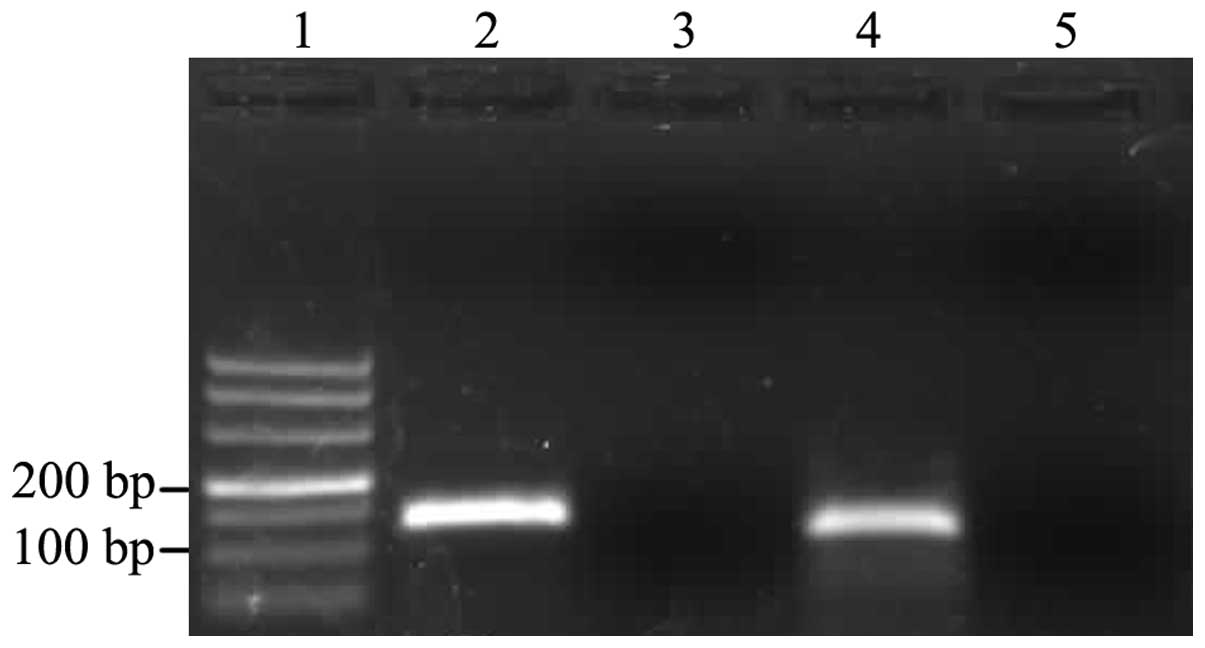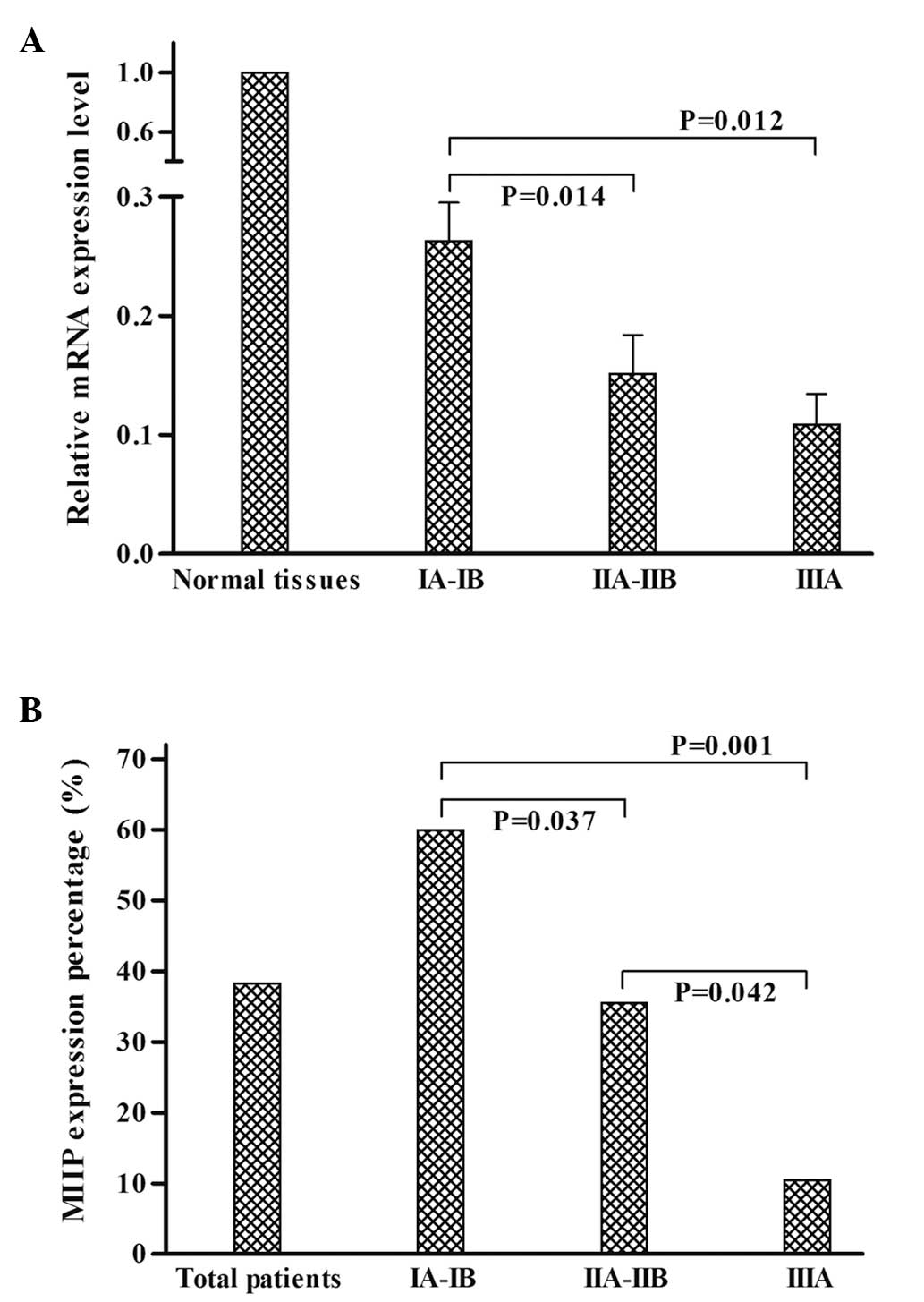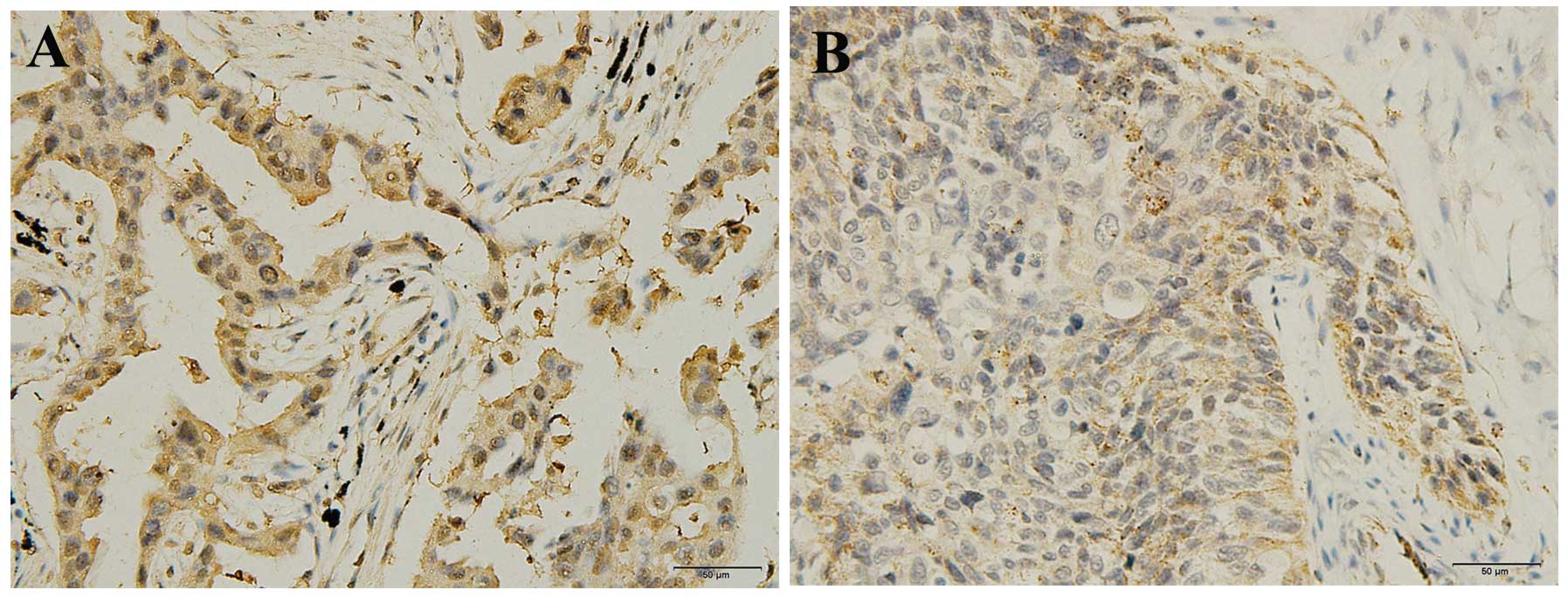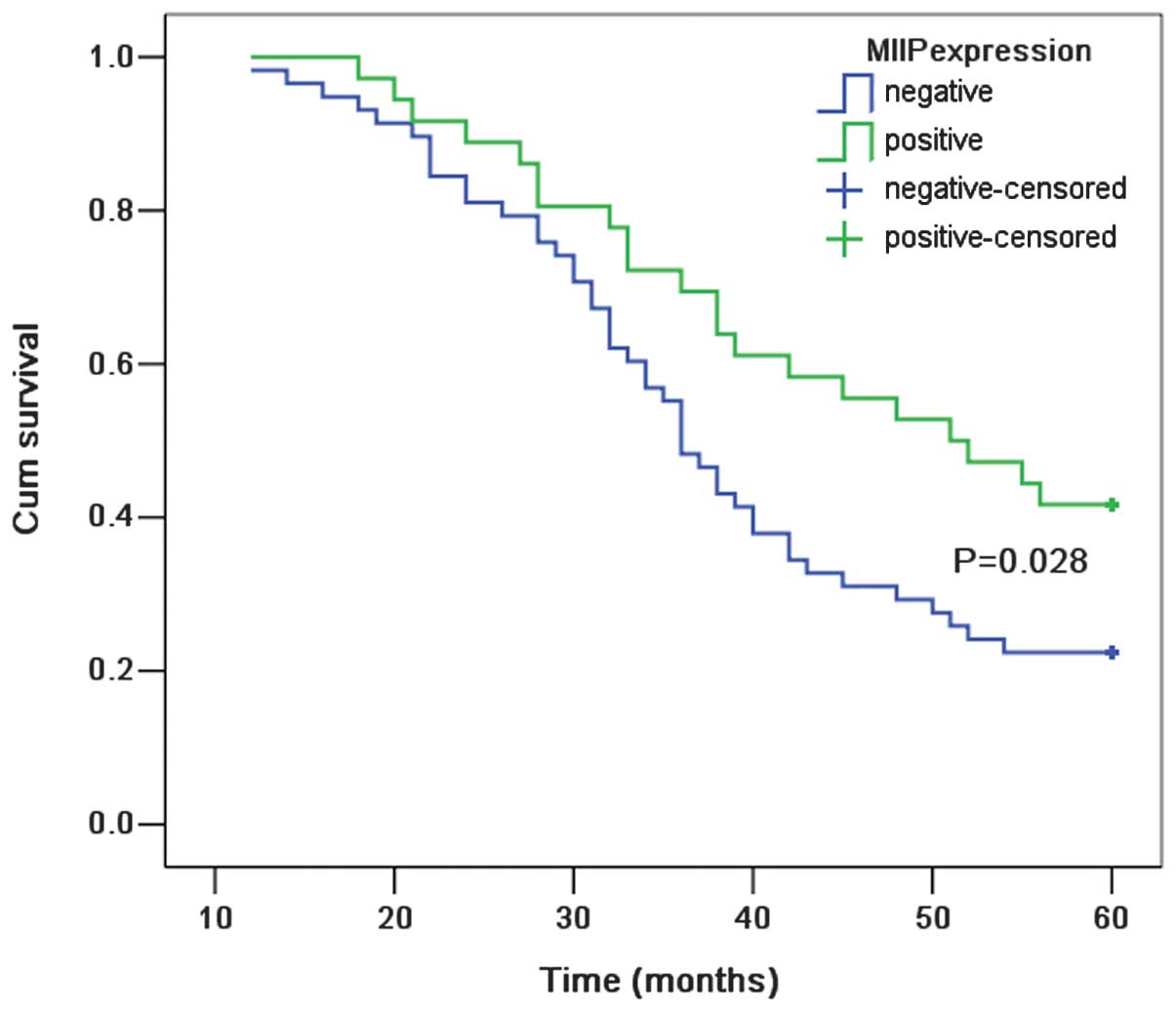Clinical significance of migration and invasion inhibitor protein expression in non-small‑cell lung cancer
- Authors:
- Published online on: September 12, 2014 https://doi.org/10.3892/ol.2014.2526
- Pages: 2417-2422
Metrics: Total
Views: 0 (Spandidos Publications: | PMC Statistics: )
Total PDF Downloads: 0 (Spandidos Publications: | PMC Statistics: )
Abstract
Migration and invasion inhibitor protein (MIIP) was initially identified in a yeast two‑hybrid screen. Recently, MIIP has emerged as a key protein in regulating cell migration and invasion. However, the MIIP expression profile in non‑small‑cell lung cancer (NSCLC) has not been analyzed. In the present study, MIIP mRNA expression levels were evaluated using the SYBR Green quantitative real‑time polymerase chain reaction method in 37 NSCLC specimens and matched normal tissue samples. MIIP protein expression in a further 94 NSCLC specimens was examined with immunohistochemistry. Patient survival data were collected retrospectively, and the association between MIIP protein expression and the five‑year overall survival rate was evaluated. The results revealed that MIIP mRNA and protein expression were downregulated in cancer tissues, as compared with the matched normal tissues. MIIP expression levels were significantly associated with pathology and tumor stage, with reduced MIIP mRNA expression levels detected in advanced tumor stage samples. Furthermore, patients with MIIP‑positive protein expression had an improved prognosis as compared with those patients with MIIP‑negative protein expression, with five‑year survival rates of 41.7 and 22.4%, respectively (Kaplan‑Meier, log‑rank, P=0.028). A significant association between MIIP protein expression and improved prognosis was also demonstrated using univariate and multivariate analyses (P=0.033 and P=0.040, respectively). These results suggest that MIIP may have a potential role in the pathogenesis of NSCLC and also confirm that MIIP is a putative tumor‑suppressor gene. Therefore, MIIP may be identified as a functional genetic marker of NSCLC development and prognosis, and may be an attractive therapeutic target for the treatment of lung cancer.













